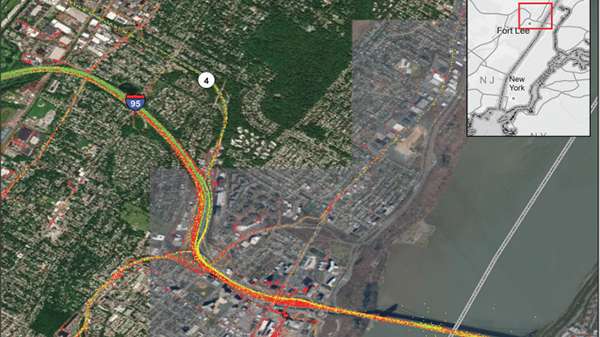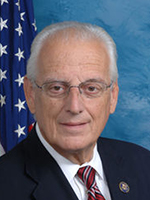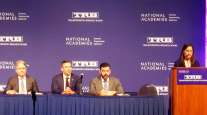Senior Reporter
Top 100 Truck Bottlenecks: 2020 ATRI Ranking Has Familiar Chokepoints

[Stay on top of transportation news: Get TTNews in your inbox.]
This year’s Top Truck Bottleneck List by the American Transportation Research Institute shows little improvement among the worst freight corridor chokepoints in the nation.
The intersection of Interstate 95 and State Route 4 in Fort Lee, N.J., used to connect to Manhattan’s Upper West Side via the George Washington Bridge, earned the distinction of being recognized as the premier bottleneck for trucks this year after also topping ATRI’s list last year.
ONE YEAR AGO: See last year's Top 100 bottleneck ranking
“It’s probably the worst bottleneck in the world for trucks. And they need to focus on it,” New Jersey Motor Truck Association executive director Gail Toth told Transport Topics Feb. 19 after the list of bottlenecks was released.
That chokepoint previously led the list in 2014, while consistently ranking in the top 10 over the years.
In part two of a two-part exploration of autonomous technology today, our latest RoadSigns podcast revisits conversations with Chuck Price of TuSimple and Ognen Stojanovski of Pronto.ai. Hear them discuss a palatable Level 2 version of trucking autonomy. Listen to a snippet above, and to hear the full episode, go to RoadSigns.TTNews.com.
ATRI’s list of bottlenecks is an assessment of the level of truck-involved congestion at 300 locations on the national highway system. The group relied on truck GPS data from more than 1 million heavy duty trucks to compile the bottlenecks data.
Locations with significant congestion were found to have average daily speeds of 45 mph or less, ATRI said
New Jersey is known for such congestion. Lawmakers there increased the state’s diesel tax to 48.5 cents a gallon and gasoline to 41.4 cents per gallon to fund projects meant to improve freight corridors and other roadways.
Officials at the North Jersey Transportation Planning Authority, tasked with overseeing projects in a 13-county region, said they are quite aware of the infamous bottleneck at the Jersey side of the bridge. Anne Strauss-Wieder, NJTPA’s director of freight planning, explained improving the flow of traffic would necessitate a multi-modal approach involving partners at the state and federal level.
As she put it, “It is complex. It is clearly on our radar, and the best way to summarize it is we’re trying to work the problem.”
Added David Behrend, NJTPA’s deputy executive director: “Certainly, it’s a challenge but there is no easy fix, unfortunately.”

Pascrell
From Washington, Rep. Bill Pascrell (D-N.J.) continues to raise awareness about the intersection. “My district in North Jersey is all too familiar with needing to invest in the infrastructure. In my district I have clogged roadways, decrepit bridges, congested airports, aging freight rail lines,” Pascrell said during a House hearing earlier this month. “And when I say aging, our infrastructure is often many decades, if not nearly a century old.”
The White House has acknowledged the impact congestion has along prominent freight corridors. In a fiscal 2021 budget request to Congress, President Donald Trump proposed dedicating $50 billion for the Moving America’s Freight Safely and Efficiently program. A two-page document from the White House that accompanied the budget request explained the program would be backed through formula and discretionary grants to expand capacity, deploy technologies, and expand truck parking. “Traffic congestion cost commuters an estimated $179 billion in wasted time and fuel in 2017. Congestion cost the trucking industry an estimated $74 billion in 2016, and these costs are often passed along to American households and businesses in the form of a hidden tax on the goods they purchase,” according to the White House.
2020 Top 100 Bottlenecks List by Transport Topics on Scribd
The George Washington Bridge is managed by the Port Authority of New York and New Jersey. Nearly 3.8 million trucks crossed the bridge in 2019. If traveling with EZPass, off-peak toll for a 5-axle truck is $90 and $95 during peak hours. If using cash, tolls for trucks are $110, according to the Port Authority’s directive.
Besides the George Washington Bridge, other notorious points of freight congestion were:
- No. 2: Atlanta’s I-285 at I-85 North interchange (also No. 2 last year)
- No. 3: Nashville’s I-24/I-40 at I-440 East interchange (up from No. 8 last year)
- No. 4: Houston’s I-45 at I-69/US 59 interchange (up from No. 5 last year)
- No. 5: Atlanta’s I-75 at I-285 North interchange (down from No. 3 last year)
“ATRI’s bottleneck analysis is an important tool for TDOT as we work to maximize the safety and efficiency of our transportation system, and ensure we are making the smartest investments possible,” Tennessee Department of Transportation Assistant Bureau Chief of Freight and Logistics Dan Pallme said.
“Thanks to ATRI’s research we can see exactly how decades of ignoring the problem are impacting not just our industry but our economy and commuters everywhere,” said Chris Spear, president of American Trucking Associations. “This report should sound the alarm for policymakers that the cost of doing nothing is too high and provide a roadmap of where to target investments to really solve our nation’s mounting infrastructure crisis.”
The full listing, featuring a rundown of the nation’s top 100 bottlenecks, is available at TruckingResearch.org.
Want more news? Listen to today's daily briefing:





